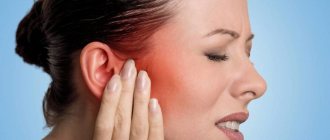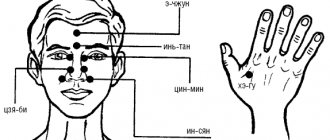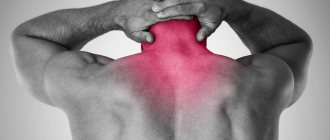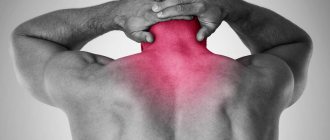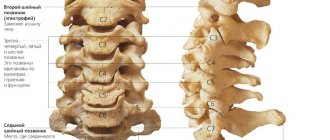Our clinic specializes in the field of facial neurology, treatment of diseases of the trigeminal and facial nerves (including treatment of trigeminal and facial neuralgia). The trigeminal nerve does not hurt on its own: we will look for and treat the cause of the nerve irritation. With us you can get help from a neurologist with serious experience in facial neurology, perform facial electromyography and vascular studies. Usually a completely understandable source of pain irritation of the trigeminal nerve is discovered. If you can fix it, the problem is solved. Finding the true cause of pain in the trigeminal nerve system (and conducting competent treatment of trigeminal neuralgia) is quite possible in each case. You can contact us in case of exacerbation of neuralgia to quickly relieve acute pain in the face.
Go to the page about the treatment of facial pain after dental surgery
- Painkillers do not cure. Find and eliminate the source of trigeminal nerve irritation
- Symptoms of neuralgia and inflammation of the trigeminal nerve
- Neuralgia of the facial nerve
- Myofascial pain syndrome of the face and temporomandibular joint
- Neuralgia of the glossopharyngeal nerve
- Pain in the vegetative ganglia of the face (ganglionitis)
- Examination and treatment at the Echinacea clinic
Painkillers do not cure. Find and eliminate the source of nerve irritation
Finlepsin and painkillers can reduce pain, but do not affect the cause of trigeminal neuralgia. avoid lifelong use of Finlepsin and painkillers if you eliminate the source of pain itself, which irritates the nerve and causes pain impulses. This is exactly how treatment will be structured in our clinic. We will examine you, find the cause of neuralgia and do everything to help you.
The exit of the filling material beyond the apex of the tooth caused severe pain in the second branch of the trigeminal nerve in the man. Side view:
tooth, a free fragment of filling material that conflicts with the trigeminal nerve is circled. Neuralgia appeared several months after a visit to the dentist. | Shooting pain in all three branches was a consequence of poor circulation in the cerebral parts of the trigeminal nerve in an elderly woman. The area of the brain affected by blockage of one of the brain vessels is circled. Check the blood vessels of the head and neck | A young woman had trigeminal neuralgia due to pressure from one of the cerebral arteries on the trigeminal nerve root. The MRI scan shows the intersection of the trigeminal nerve (runs vertically) with the artery (runs horizontally). The artery put pressure on the trigeminal nerve as it exited the brain stem. |
avoid lifelong use of Finlepsin and painkillers if you eliminate the source of pain itself, which irritates the nerve and causes pain impulses. This is exactly how treatment will be structured in our clinic. We will examine you, find the cause of neuralgia and do everything to help you.
What sources of trigeminal nerve irritation do we find most often:
- Inflammation of the trigeminal nerve by viruses (herpes and postherpetic neuropathy of the trigeminal nerve);
- Problems in the area of the tooth root - filling material leaving the tooth root, inflammatory process (pulpitis, periodontitis, etc.);
- Traumatic tooth extraction, unsuccessful dental anesthesia;
- Facial trauma and its consequences;
- Inflammatory process of the nose and paranasal sinuses, cysts of the maxillary sinuses.
Causes
Several factors are responsible for the development of neuralgia:
- Hypothermia of the face. A similar reason is common among “lovers” of walking in windy, cold weather without a hat. For such people, even the harmless habit of washing with cold water or taking a cold shower can cause inflammation.
- Injury. Any injury to the face or head (blow, fall, bruise, concussion) is a trigger for neuralgia.
- Compression of blood vessels. There are internal and external compression. Internal include any type of tumor, adhesions, formations on blood vessels (aneurysm), displacement of veins and arteries relative to the nerve, which from the inside exert a mechanical effect on the nerve (compress), changing its functioning. Inflammations that develop in the nasal or oral cavities are attributed to external causes.
- Oral diseases. Frequent “culprits” for the development of a neuralgic condition: periodontitis, gum abscess, pulpitis, gingivitis, periodontitis, complex caries.
- Shingles. Having a viral nature of origin, the disease can develop asymptomatically for a long time. Its activation occurs when the immune system is weakened and always affects the nerve, developing inflammation in it.
- Nervous "hunger". Over the years, cholesterol accumulates in the vessels and plaques form. In the case when they almost completely block the vessels that feed the nerve, neuralgia appears.
- Infection. Entering the body of any viral infection with a weakened immune system leads not only to a deterioration in the person’s general condition, but also to nerve inflammation.
- Chronic diseases. Inflammatory processes during otitis media and sinusitis during exacerbation often spread to the trigeminal nerve.
- Malocclusion. Dental malocclusion changes the position of the nerves, causing them to be compressed and making them vulnerable to the development of inflammation.
- Multiple sclerosis. With this dangerous disease, the immune system is greatly weakened, the myelin sheath of the fibers is destroyed and tissue scarring progresses. These processes also affect the trigeminal nerve.
Those who have experienced nerve inflammation know that this pathology requires long-term treatment. But, knowing the main reasons for the development of this condition, in most cases it is possible to prevent its development.
We will talk about what tooth pulpitis is in a separate review. And here we have listed which antibiotics are recommended to take for flu.
Symptoms of neuralgia and inflammation of the trigeminal nerve
We will try to relieve pain as quickly as possible . In this case, it is necessary to search for the source of nerve irritation and treat it.
Symptoms of damage to the brain centers of the trigeminal nerve (one or more of the following):
- Sudden attacks of pain in the face, shooting, shocking;
- Attacks are provoked by movement, chewing, wind blowing, touching the face or oral mucosa;
- Pain may occur in the upper, middle or lower part of the face (depending on which branch of the trigeminal nerve is affected), usually on one side;
- The sensitivity of the facial skin may be reduced or increased.
Symptoms of damage to the facial branches of the trigeminal nerve (one or more of the following):
- Monotonous (not paroxysmal) pain in the upper, middle or lower part of the face;
- Possible increased sensitivity or numbness of the lip, jaw, wing of the nose, cheek, forehead, eyelid; in this case there may be no pain;
- If damage to the trigeminal nerve is associated with a tooth, symptoms may intensify when clenching the jaws or chewing.
Neuralgia of the facial nerve
Details about treatment of the facial nerve
The facial nerve, unlike the trigeminal nerve, does not transmit pain impulses and cannot hurt. The diagnosis of “facial neuralgia” is usually made incorrectly instead of the diagnosis of “trigeminal neuralgia”. The facial nerve transmits commands from the brain to the facial muscles, and the symptoms of its suffering are complete or partial paralysis of the facial muscles (facial nerve paresis).
We will examine you and do everything to help you if you have been diagnosed with Facial Neuralgia or any other problem with the facial nerve.
Myofascial pain syndrome of the face and temporomandibular joint
Very often, muscle pain in the face is mistakenly interpreted as trigeminal neuralgia. In such cases, taking Finlepsin (Carbamazepine) and conventional treatment for trigeminal neuralgia does not help. This pain is not associated with a nerve, but with constant excessive tension in the muscles of the face and some neck muscles. This pain is called “Myofascial pain syndrome of the face.”
Possible reasons:
- Malocclusion and improper closure of teeth;
- Involuntary muscle tension due to nervous exhaustion and depression (pain can be very severe);
- Previous trauma to the temporomandibular joint (blow to the jaw), previous fracture of the jaw.
Rupture or displacement of the articular disc of the temporomandibular joint may mimic trigeminal neuralgia
Facial muscle pain responds well and quickly to treatment.
As a last resort, you can use a fail-safe remedy for painful muscle tension - Botox . We inject Botox using a syringe with a microneedle directly into the painful muscle, and after 2-3 days the muscle loses its tone and stops causing pain. The effect lasts up to 6 months; This time is usually enough to eliminate the cause of muscle pain in the face.
Medicinal properties
Diclofenac is an anti-inflammatory non-steroidal drug that is used to reduce pain in joints and muscles. Its mechanism of action is to block the production of prostaglandins, which are released on damaged areas of the joint or tissue.
This medication, made on the basis of phenylacetic acid, has a wide spectrum of action:
- relieves even severe pain;
- relieves muscle spasms;
- fights inflammatory processes;
- reduces swelling;
- affects platelet formation;
- has an antipyretic effect.
For severe pain, it is best to use intramuscular injections of Diclofenac. Injections can quickly eliminate discomfort and relieve inflammation.
The dosage depends on the intensity of pain:
- for moderate pain, one injection per day is given (one ampoule of 3 ml);
- in case of sharp severe pain that you cannot endure, the injection can be given twice a day.
The active component of the injection quickly penetrates the inflamed area and exerts its therapeutic effect.
There may be a burning sensation immediately after the injection, but this should not be a cause for concern. If after 3 days of such therapy the pain remains, the patient is prescribed Diclofenac in the form of tablets or ointment. Diclofenac tablets are taken half an hour before meals with plenty of water. The dosage of the drug is determined by the age of the patient:
- adults and children over 15 years of age are prescribed 1-2 tablets (25 mg) three times a day;
- for adolescents aged 12–15 years, the optimal dosage is 1 tablet (25 mg) twice a day.
You can lubricate the inflamed area with ointment or gel 3-4 times a day.
When treating any form of neuralgia, the dosage of the drug does not change.
Neuralgia of the glossopharyngeal nerve
With neuralgia of the glossopharyngeal nerve, the pain is of the same nature as with trigeminal neuralgia, but their localization differs. The most common occurrence of pain is in the root of the tongue, pharynx, ear canal, and neck. There are also trigger zones, touching which causes an attack.
Neuralgia of the glossopharyngeal nerve can be caused by diseases of the ear, nose and throat, compression of the nerve by the muscles under the base of the skull. After clarifying the location and cause of compression (irritation) of the glossopharyngeal nerve, neuralgia can be successfully treated.
Diclofenac for intercostal neuralgia
Treatment of intercostal neuralgia with medications
Pain is a natural reaction of our body. It is an alarming sign signaling the presence of some pathology in the body.
Many people suffer from intercostal neuralgia, the main symptom of which is the presence of intense and excruciating pain, which becomes even stronger when moving or straining the pectoral muscles.
I would like to immediately note that intercostal neuralgia should be treated with the help of a qualified specialist. Under no circumstances should you self-medicate, as the disease is quite serious. First, let's look at the basic recommendations that help overcome painful sensations.
Recommendations
If severe pain occurs in the intercostal area, you should immediately contact an experienced neurologist. Why? Only an experienced doctor can make a differential diagnosis with other diseases. The thing is that under the guise of intercostal neuralgia, completely different diseases can be hidden. For example, renal colic or cardiac pathologies can occur with similar symptoms.
Our readers successfully use SustaLife to treat joints. Seeing how popular this product is, we decided to bring it to your attention. Read more here...
If intercostal neuralgia is detected, there is no need to panic, because a professional doctor can prescribe the correct treatment, which will facilitate a return to work and a healthy normal life.
Why is self-medication dangerous for health? The thing is that almost all medications have their contraindications and side effects. In addition, not all drugs will be effective for a given disease in every individual case. That is why only a qualified doctor can determine which medications, in what dosage and form are suitable for a particular patient, as well as prescribe the correct duration of medication treatment.
There are simple recommendations that promote effective treatment of pathology. It is worth remembering that in the first days of the disease, and it is during this period that the pain is incredibly strong, you need to adhere to bed rest and take sick leave.
Painkillers are effective in treating the disease in its various forms.
You can read about how to treat intercostal neuralgia with folk remedies in this article.
Naturally, first of all, patients need to be prescribed medications that can eliminate pain. Treatment must be comprehensive. Next, let's talk about the main remedies used for intercostal neuralgia.
Medicines
The pathology must be treated with the following drugs:
- analgesics (painkillers). The main mechanism of action of this group is the effective elimination of pain - the main symptom of this disease. Experts recommend taking tablets no more than 4 times a day, otherwise you cannot avoid the development of side effects, including the following: impaired renal function, hypotension, allergic reactions. An overdose can cause the following undesirable symptoms: nausea, vomiting, drowsiness, etc. Popular analgesic drugs are: analgin, sedalgin, spasmalgon;
- anti-inflammatory drugs. The peculiarity of this group of drugs is that they not only relieve the inflammatory process, but also effectively combat pain in the intercostal space. The most well-known representatives are the following drugs: diclofenac, ibuprofen. Treatment with non-steroidal anti-inflammatory drugs must be carried out competently, and medications should be taken only after the recommendation of a specialist, as they can cause such unpleasant consequences: headache, nausea, kidney inflammation, etc. The drugs are prescribed by injections or they are used as an ointment. For example, Nimid ointment is popular due to its effectiveness in combating pain and inflammation. Another effective drug is Movalis. The medicine is available in different forms: solution, tablets, suppositories. It copes well with pain;
- muscle relaxants. These medications are capable of relieving muscle spasms, and spasms are the main cause of the development of the disease;
- B vitamins. A lack of vitamins of this group can also cause the development of pathology;
- local anesthetics. The use of blockades based on novocaine or lidocaine is effective even with intense pain;
- sedatives. Drugs like Relanium or Elanium help the brain not react so violently to severe pain;
- sanitization of the oral cavity and nose. This includes the treatment of chronic tonsillitis, sinusitis, caries, etc.;
- physiotherapeutic treatment (electrophoresis, ultrasound, reflexology).
It is important to start treatment in a timely manner, otherwise serious complications may appear, including chronic pain syndrome and limited range of motion.
Additional treatments
If conservative treatment does not bring relief, surgical methods are used, among which are the following:
- neurolysis This procedure involves promptly releasing a nerve compressed by surrounding tissues;
- neurotomy. Neurotomy is the name given to cutting a nerve, which has a good effect on pain;
- tractotomy. The purpose of this procedure is to combat the conduction of pathological impulses by crossing the conduction pathways. Tractotomy is used exclusively for diseases that are refractory to other treatment methods.
Ointments for the treatment of intercostal neuralgia
Consider the most popular ointments.
Voltaren
The ointment can be applied up to 4 times a day. Due to the presence of diclofenac in the composition, an analgesic and anti-inflammatory effect is provided.
Pain in the vegetative ganglia of the face (ganglionitis)
Burning pain in the face, jaw, wing of the nose or ear is a symptom of irritation of the autonomic nodes of the face: pterygopalatine, nasociliary (ciliary), ear, submandibular. Common causes: viral damage, cysts of the sinuses and teeth, previous facial trauma. Ganglionitis subsides after the cause of irritation of the affected nerve ganglion is identified and treated.
Examination and treatment at the Echinacea clinic
Finlepsin, Tegretol, Carbamazepine can reduce pain, but do not cure neuralgia. Therefore, we will find out where and why the pain appears, and based on the data obtained, we will carry out the necessary treatment. It may be enough to carry out a course of antiviral treatment or improve the functioning of cerebral vessels, treat inflammation in the sinuses or restore normal sleep - and the pain begins to subside. In some cases, blocks of the branches of the trigeminal nerve help well.
Be sure to bring the results of previously performed studies with you to your appointment; we will carefully study them and, if necessary, perform any missing studies. What may be needed from diagnostics:
- MRI scan of the brain, facial tissue and/or neck. MRI scans clearly show the brain centers of the trigeminal nerve and its exit area (root), blood vessels, and paranasal sinuses.
- X-ray computed tomography of the jaws and face. CT scans show bones, jaws and teeth, and sinuses in detail. RCT helps in diagnosing disorders of the structure of the bone canals of the branches of the trigeminal nerve.
- Panoramic photographs of the upper and lower jaws (orthopantomogram) or targeted X-ray photographs of the teeth. Such radiographs allow us to judge the causes of damage to the jaw branches of the nerve. Cysts of the roots of the teeth are visible, the filling material extends beyond the apex of the tooth, and fractures of the roots of the teeth.
- Blood tests for the presence of viral inflammation of the trigeminal nerve. Suspicion of the presence of a virus and weak immunity as the cause of its activity can be easily verified using a blood test.
- Electromyography is a method for studying the conduction of impulses along nerves. Electromyography of the trigeminal nerve helps to establish the presence/absence and level of disturbance in the conduction of impulses along the nerve (cerebral cortex, brain stem or nerve branches).
The sinus cyst was causing pain in the second branch of the trigeminal nerve (CT scan). 1 – normal maxillary sinus. 2 – maxillary sinus cyst.
You will need to be examined by a neurologist.
List of medications for intercostal neuralgia
Severe pain in the ribs prompts a person to go to the doctor to find out how to treat intercostal neuralgia and what medications to suppress the symptoms of the disease.
Intercostal neuralgia does not belong to the category of dangerous diseases. But it develops against the background of serious pathologies and develops into serious complications. Neuralgia is caused by intervertebral protrusions and hernias, tuberculosis, diabetes mellitus, multiple sclerosis, and tumors.
The symptoms of neuralgia are such that they can easily be confused with signs of renal colic, cholecystitis, and angina. Only a doctor can make a correct diagnosis and prescribe treatment based on diagnostic studies.
Methods of drug therapy
The use of medications is the main way to treat intercostal neuralgia. To treat the disease and the cause that caused it, the following is prescribed:
- pills;
- injections for intramuscular and intravenous administration;
- ointments, gels or creams.
The form of medication for intercostal neuralgia is chosen by the doctor. Medicines are prescribed taking into account the severity of the disease, the patient’s well-being and contraindications.
Tablets are considered an ineffective treatment for intercostal neuralgia. In addition, they irritate the mucous membranes of the gastrointestinal tract and cause adverse reactions. Erosive gastritis and stomach ulcers are possible harm from uncontrolled use of tablets.
Pain relievers
The primary goal of drug therapy is to relieve pain – the main symptom of the disease. Pills and injections help get rid of prolonged debilitating pain. For pain relief the following is usually prescribed:
To relieve unbearable pain that occurs with swelling of nerve fibers and root compression syndrome, the following is used:
Analgesics are used to relieve pain and prevent new attacks:
These drugs are available in tablets, injection solutions, ointments and gels. They are taken in tablets. To quickly relieve pain, injections are given and IVs are placed.
The course of treatment with anesthetics is short, it does not exceed 4-5 days. They disrupt the normal functioning of the gastrointestinal tract.
Local painkillers
Local anesthetics relieve swelling and pain of a neuralgic nature. They are prescribed for temporary relief of acute pain. Reduce pain and eliminate muscle tension with ointments, gels, and injection solutions.
The drugs are applied or injected directly into the lesion. They are used to make blockades. Pain is suppressed with injections of Lidocaine, Novocaine or Xylocaine. The use of local anesthetics is limited in time. They are highly toxic agents that can cause great harm to the body. Unbearable pain is relieved with one-time blockades.
Anti-inflammatory medications
Inflammatory processes occurring in nerve fibers lead to swelling and pain. The swollen tissue puts pressure on the nerves. Pinched nerve roots are accompanied by pain. Relieving inflammation, eliminating pain.
Inflammatory processes are suppressed with non-steroidal anti-inflammatory drugs:
- Ortofen;
- Diclofenac;
- Nimesulide;
- Ketoprofen;
- Voltaren;
- Movalis.
The products effectively relieve inflammation. If you use them correctly, according to the regimen given by the doctor, you can get a long-term stable remission. To eliminate inflammation, take a tablet 2 times a day, give an injection, or use rectal suppositories.
The body's susceptibility to drugs is almost the same. But they are best absorbed through the mucous membranes. Long-term treatment with anti-inflammatory drugs causes exacerbation of certain ailments (for example, gastritis or ulcers). They should not be used without a doctor's prescription.
Muscle relaxants
Drug treatment for intercostal neuralgia includes muscle relaxants - drugs with a calming effect. They eliminate pain, relax muscles, and improve the patient’s well-being. Which of them can be used for treatment:
The taken muscle relaxant eliminates congestion in muscle tissue and swelling. For treatment, use a drug prescribed by a doctor.
Vitamin therapy
To suppress inflammatory processes, replenish vitamins and minerals, and strengthen the immune system, it is necessary to take special complexes. Medicines with B vitamins are involved in blocking acute inflammatory processes that erupt in nerve tissues. Vitamin complexes relieve muscle spasms and neutralize the negative effects of medications used.
Sedatives
Painful sensations worsen the well-being of patients, plunge them into a state of prolonged stress, create a feeling of discomfort, and reduce the quality of life. Taking sedatives for intercostal neuralgia helps relieve nervous tension, relax skeletal muscles, and normalize the condition of the sick person.
For this purpose, drug therapy can include a remedy with an extract of a soothing medicinal plant. Suitable for treatment:
Herbs with a sedative effect are used separately or preparations are made from them. It is worth drinking infusions and decoctions from them. Pharmaceutical preparations have an effective effect: syrups, tinctures.
They drink a sedative at night. It promotes good sleep, proper rest, and relieves nervous and muscle tension. Essential oils: lavender and peppermint have an excellent relaxing effect.
Medicines with bee and snake venom
Eliminate intercostal neuralgia with medications based on snake and bee venom. The effectiveness of ointments and gels with these poisons is quite high. They warm up the skin, accelerate blood circulation, remove metabolic products, and saturate tissues with bioactive substances. The drugs regenerate damaged nerve tissue.
The product with poison is used externally, it is rubbed into the lesions with soft massaging movements, bypassing the heart area. For treatment use:
- Apisatron. Ointment with bee venom suppresses pain and inflammation, restores blood flow.
- Viprosal. Ointment with viper venom eliminates pain and improves blood circulation. Camphor and fir, which the drug contains, have an analgesic effect.
These ointments are used as prescribed by a doctor. They are not always used for treatment of:
- lactation;
- pregnancy;
- allergies;
- heart diseases.
Antiviral agents
Problem: how to treat intercostal neuralgia of a viral nature is easily solved. Antiviral medications are used to suppress it. Effectively fight pathology:
Ointments and gels
Remedies for neuralgia in the form of ointments and gels quickly relieve pain. They instantly penetrate through the skin pores into the deep tissues, to the lesion, reduce the severity of the pain syndrome and eliminate swelling.
External agents stimulate blood circulation, distract from pain, and relieve nervous tension. Thanks to them, blood supply to the sore spot improves, nutrition of damaged tissues, and pain goes away.
To treat intercostal neuralgia use:
- Fastum-gel. The product relieves pain, stimulates blood flow, and eliminates swelling.
- Capsicam. The ointment, due to its effective warming effect, accelerates the supply of blood to tissues. It restores tissue trophism and helps replenish nutrients.
- Finalgon. The ointment warms up. Thanks to it, blood vessels dilate. Blood flow increases. Oxygen and nutrients enter the tissues.
- Indomethacin, Ortofen, Naklofen, Ibuprofen. Ointments fight inflammation, swelling and pain.
- Menovazin. The ointment has a pronounced analgesic effect.
- Chondroxyl. The chondroprotector restores mobility to the spine.
Preference is given to ointments. Their rate of penetration into tissue is higher than that of gels. In the early stages and for severe pain, ointments are used that can relieve muscle spasms and relax muscles.
For patients suffering from severe pain, try not to prescribe ointments with a burning effect. By increasing stimulation at the site of the lesion, it is possible to provoke the development of an ischemic crisis or heart attack due to excessive outflow of blood from the coronary vessels.
Antispasmodics
With neuralgia, the muscle tissue surrounding the damaged nerve fibers spasms, their tone is excessively high. Without eliminating muscle spasms, you cannot get rid of pain. Increased tone is relieved with antispasmodics:
To eliminate spasms, they take pills and give injections.
Intercostal neuralgia requires complex therapeutic treatment. Thanks to it, pain is quickly relieved, the patient’s well-being is improved, and the inflammatory processes that cause the disease are blocked. Prescription of treatment by a doctor is a prerequisite. The prescribed medications will give the maximum therapeutic effect and will not allow complications to develop.

